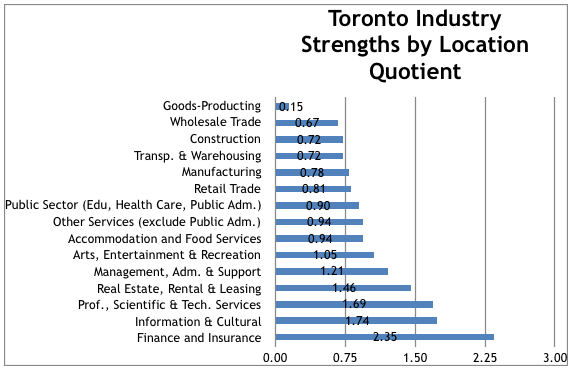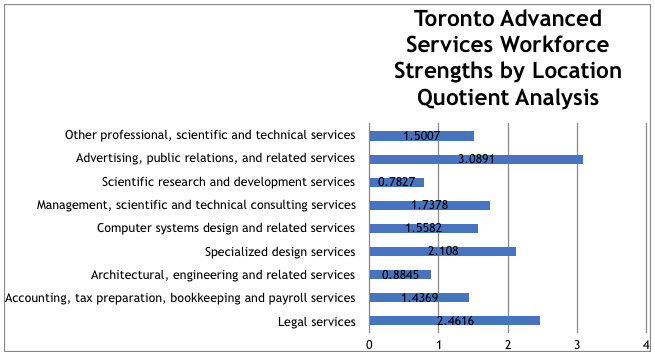Toronto, Canada is a modern mega-city on the economic rise that not only operates at the economic epicenter of Canada but as a major advanced services economic base. While trade battles tend to dominate the headlines, Canada itself remains the largest trading partner with the United States and has a major economic footprint for a nation with only 18 million people.
Canada resembles the US in its market-oriented economic system, pattern of production, and high living standards, and since World War II, like the United States, Canada illustrated strong growth of the manufacturing, mining, and service sectors. Canada has transformed from a largely rural economy into one primarily industrial and urban. Canada has a large oil and natural gas sector with the majority of crude oil production derived from oil sands in the western provinces, especially Alberta—ranking third in the world in proved oil reserves behind Venezuela and Saudi Arabia and is the world’s seventh-largest oil producer. In fact, Canada is the largest foreign supplier of energy to the US, including oil, natural gas, and electric power, and a top source of US uranium imports. In late 2018, the Canadian economy stalled and the weakness has carried over into this year. However, recent economic data has been decidedly encouraging and indicative of an economy coming out of hibernation. Nonetheless, past weakness will restrain growth this year to a modest 1.4 percent, before an acceleration to 1.7 percent in 2020. Toronto has a growing economy. As the table below illustrates, Toronto’s regional Gross Domestic Product (the sum of their economic output) has enjoyed steady growth in recent years.
Toronto Regional GDP 2011-18

Sources: Statistics Canada – Labour Force Survey, 2011 National Household Survey, Gross Domestic Product Table: 36-10-0402-01
Measuring industry concentration in a region illustrates industry strengths. This is measured by a review of the industry cluster and location quotient for the success of these clusters. An industry cluster is comprised of a geographic concentration of firms within a particular industry. Location quotient is an indicator of the economic concentration of a certain industry in a state, region, county or city compared to a base economy, such as a state or nation. A location quotient greater than 1 indicates a concentration of that industry in the area. The table below illustrates that Toronto’s top industries by size include finance and insurance, information & cultural and professional/scientific/technical services in rank order.


Toronto has emerged as a global finance and insurance center as well as having strengths in other advanced services industries. As the table below illustrates, Toronto has a large pool of workers in the advanced services industries including in computer systems design and related services and the insurance sector.